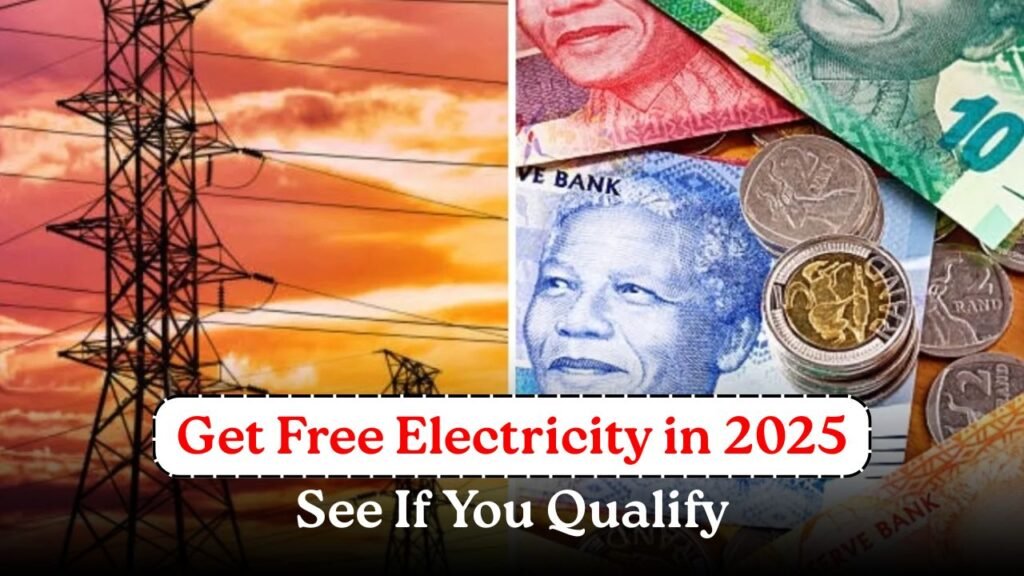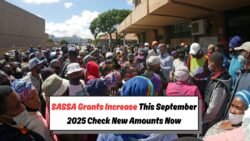Free Basic Electricity 2025 – Free Basic Electricity (FBE) 2025 is a government-backed relief that helps low-income households cut their monthly electricity costs and keep essential appliances running. If you’re struggling with bills, this program can reduce the pressure by allocating a small amount of electricity at no charge each month, depending on your municipality’s policy. The key is making sure your home is registered correctly and that you know which office or service provider—your local municipality or Eskom—supplies your area. Most delays happen because people apply without the right documents, use the wrong account number, or miss simple verification steps. In this guide, you’ll learn how the benefit works, who qualifies, and exactly how to apply quickly without back-and-forths. We’ll also cover common mistakes that cause rejections and show you what to do if your free units don’t reflect on a prepaid meter. Follow the steps below carefully, and you could be approved in weeks instead of months, with fewer store visits and fewer calls.

What Is Free Basic Electricity (FBE) in 2025?
Free Basic Electricity is a pro-poor support measure intended to guarantee a basic level of power for essential needs—lighting, charging, and small appliances—so households aren’t forced to choose between electricity and other necessities. In 2025, municipalities set the exact amount, rules, and verification cycles, and some areas are administered directly by Eskom, while others are managed by local councils or contracted service providers. Typically, approved households receive a monthly allocation automatically; for prepaid customers, this shows as free units when you buy or vend electricity, and for conventional/post-paid, it reflects as a credit on the bill. Allocation resets monthly and does not usually roll over, so it’s best to plan usage around your recharge dates. Remember that policies vary across towns and metros, so always check your municipality’s official indigent or FBE policy for the latest numbers, cut-offs, and channels. Understanding these basics will help you apply once—and get it right.
Eligibility: Who Qualifies and What You Need
Qualification is based on your municipality’s indigent policy, which generally targets low-income households, pensioners, people receiving social grants, and households headed by unemployed or under-employed caregivers. Landlords and backyard rooms can qualify individually only if meters and accounts are correctly registered per dwelling; informal dwellings may need special verification from ward councillors or community offices. To avoid delays, gather core documents before you apply: a valid South African ID (or acceptable alternative), proof of residence or a signed affidavit confirming address, your municipal account or Eskom account number, your prepaid meter number (if applicable), and proof of income or grant receipts. If you’re a tenant, include a lease or a permission letter from the property owner. Own-name registration is crucial—if the account is in someone else’s name, you’ll need their consent or a change-of-occupier process first. Keep clear copies (physical and digital), since most offices now accept walk-in, email, and online submissions.
How to Apply Fast: Step-by-Step
Start by confirming who supplies your electricity: Eskom or your municipality. Check your last slip, bill, or meter sticker for the supplier name and the correct account or meter number. Next, download or collect the “indigent/FBE application” form from your municipality’s website or customer care office; Eskom-supplied areas may use a dedicated form or online portal. Fill in every field, attach certified copies of your ID, proof of address, and proof of income/grants, and write your prepaid meter number exactly as printed. Submit via the fastest channel available—online portal or email if offered—then keep your reference number and a timestamped copy of your application. Respond quickly to any follow-up SMS or email asking for missing pages or clearer scans. After submission, buy a small prepaid token to trigger the free units (where applicable) and check your balance. If you’re post-paid, monitor your next bill for the FBE credit line. Keep details handy for annual re-verification.
Common Problems & Quick Fixes
No free units after approval? First, vend a minimal token (e.g., the smallest purchase) to refresh your meter; free units often reflect only after a new token is loaded. If that fails, verify that your meter number on record matches the physical meter—transposed digits are a frequent culprit. Rejections due to “account not in applicant’s name” are resolved by submitting a change-of-occupier form or a landlord consent letter, plus the lease. Address disputes can be fixed with a councillor’s confirmation letter or an affidavit stamped at a police station. If your income changed, update your file promptly—out-of-date pay slips or grant proof can pause benefits. For blocked meters, visit the municipal vending office or call the supplier to clear system flags. Always keep a folder of PDFs/photos of your documents, reference numbers, and receipts; resubmitting clean, legible copies speeds up turnaround. When policies change, re-apply or re-verify early to prevent gaps in your monthly allocation.



